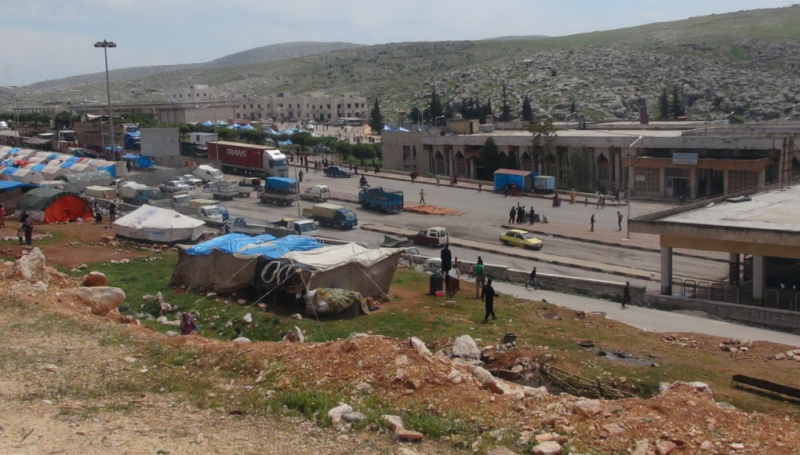Since the escalation of conflict in December 2019, the humanitarian situation in the opposition-controlled enclave of Idleb has reached an intolerable level. The area, which was already highly vulnerable and dependent on aid, has seen the displacement of more than 950,000 people in just over two months. While some of the newly displaced are moving northwards to the relative safety of Azaz, Afrin, and other sub-districts in northern Aleppo, most are remaining within Idleb governorate, moving towards the border in and around already overcrowded camps and villages, as well as settling in open fields. The situation overview aims at supporting humanitarian planning in the northwest of Syria. Based on recent information collected by REACH and its partners, this document provides an overview of 1) the displacement trends since December 2019; 2) some of the key needs and vulnerabilities of the crisis-affected populations; 3) the impact of the crisis on markets, and the availability and affordability of basic items.

Left: IDP settlement expansion in Dana sub-district between 12 November 2019 and 16 February 2020. Right: IDP settlement expansion in Maaret Tamsrin sub-district 12 November 2019 and 16 February 2020. Image courtesy of DigitalGlobe. Source: US Departement of State Humanitarian Information Unit, NextView License.
Key findings
—————————
- Mass displacement continues. So far, over 950,000 people (50% of them children) have been displaced since 18 December 2019 within Idleb enclave and towards ‘Olive Branch’ and ‘Euphrates Shield’ areas. This has led to an overcrowding of Internally Displaced Person (IDP) camps, collective sites and villages, with 39% of newly displaced households sleeping in the open, in tents, or makeshift shelters.
- The population displaced since December 2019 is extremely vulnerable. 85% of them are reportedly not intending to leave their current location in the coming two weeks mostly due to not being able to afford further movement. The prevalence of vulnerable populations is common among newly displaced, with presence of unaccompanied children reported in 91% of assessed communities in Idleb governorate.
- Shelter, winter items (notably heating fuel), and food are priority needs. Lack of access to shelters and heating fuel is of particular concern given the harsh winter conditions. In addition, most households displaced since December are resorting to negative coping strategies with, for example, 25% of the population reported as eating one meal or less per day.
- These needs are compounded by high inflation and a parallel depreciation of the Syrian Pound (SYP) against the US Dollar (USD), causing the purchasing power of households to drop significantly. The cost of the Survival Minimum Expenditure Basket (SMEB) has increased by 65% between October 2019 and February 2020, with prices of items such as bread increasing by 80% and heating fuel by 129%.

Left: Inflation of the Survival Minimum Expenditure Basket (SMEB) severely increasing since November 2019. Right: Prices of bread and fuel simultaneously increasing.
Analysis
——————
- As conflict continues to encroach upon highly populated areas such as Idleb city, the horrendous humanitarian situation is at risk of deteriorating even further.
- Humanitarian actors are facing significant challenges in effectively respond to the rapidly escalating needs in the region and lack the required resources to meet the exponential increase in needs.
- In light of this unprecedented crisis and with no time to waste the international community must step up its response to the crisis.
- Humanitarian actors must be supported to upscale their operations in both Idleb and northern Aleppo through increased funding and improved access.
- Humanitarian actors must be able to operate safely beyond border areas to respond to the needs of affected populations while avoiding creating a dangerous pull factor that would further congest the camps sites and villages close to the Bab Al Hawa border crossing.
For more information
REACH Emergency Needs Tracking (ENT)
REACH Daily Wage and Employment Sector Assessment: January 2020 Factsheet
REACH and Cash Based Response Technical Working Group (CBR-TWG) Market Monitoring
December 2019: NE Syria – NW Syria
January 2020: NE Syria – NW Syria
REACH Humanitarian Situation Overview in Syria (HSOS): October 2019, December 2019
IDP Situation Monitoring Initiative (ISMI): September 2019, October 2019, November 2019
For media-related queries, please contact:
Emmanuel Gamard
Communication & Dissemination Officer
[email protected]
Laura Thisted
Syria Country Coordinator
[email protected]









